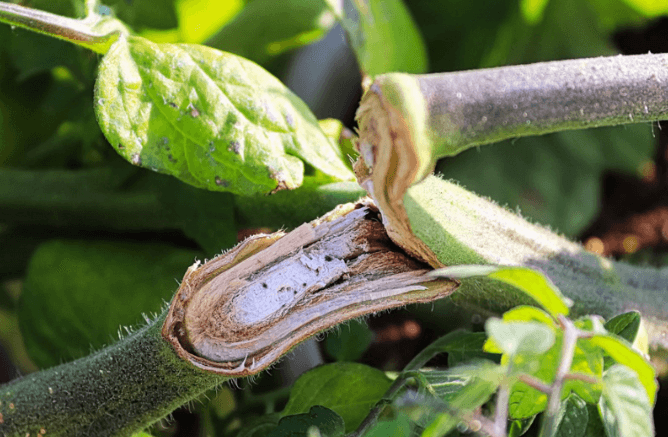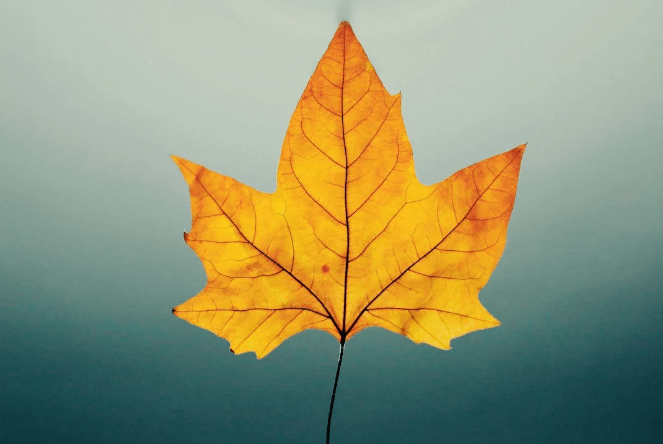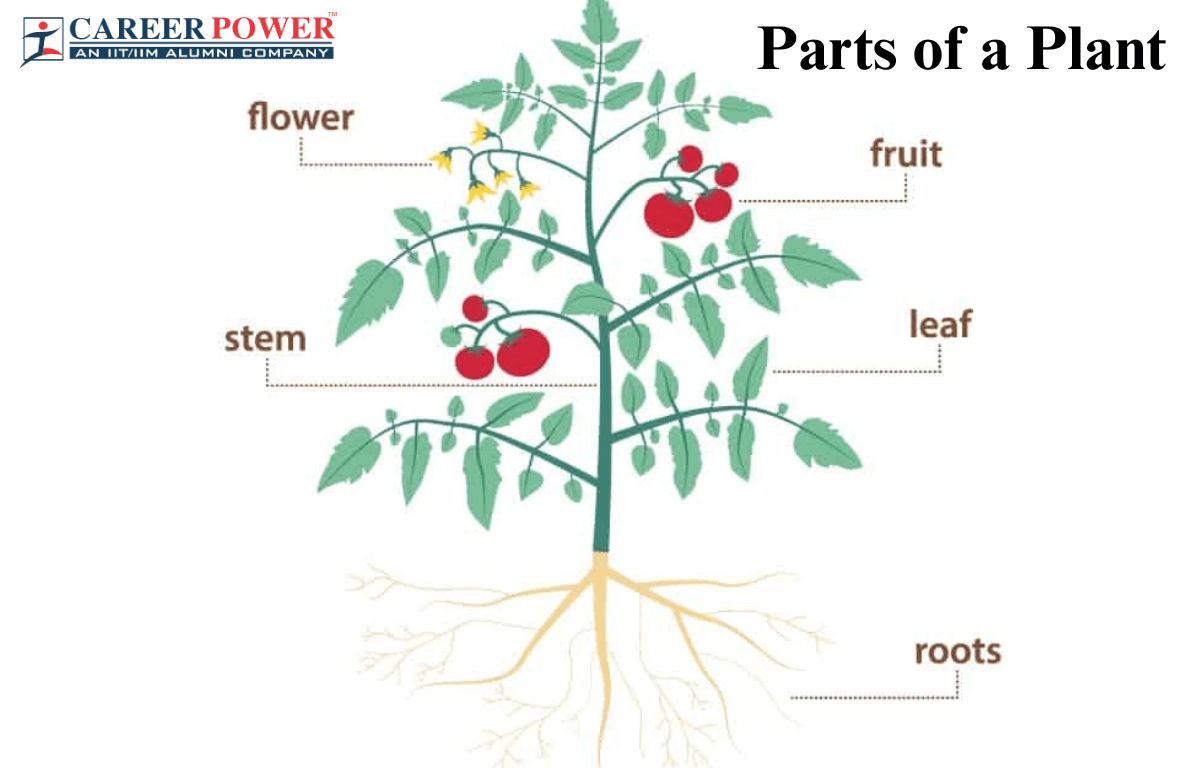In the field of biology, the study of plants is known as botany, and understanding the various parts of a plant is essential for comprehending their Biology and significance. Plants are living things that have Eukaryotic Cells and are made up of multiple cells. They grow on the Earth’s surface, in water, and sometimes on other plants. They produce their food with the help of Photosynthesis (the process in which the plants use light energy, carbon dioxide, and water to synthesize sugar or Glucose).
Plants in Biology
Plants play a crucial role in preserving biodiversity, providing habitats for wildlife, and purifying the air by absorbing carbon dioxide and releasing oxygen. They also serve as an abundant source of food, medicine, and shelter, while also effectively preventing soil erosion. The plants are also known as Primary Producers. In this article, we will examine the various parts of a plant and uncover their functions and importance in the lives of these incredible organisms.
Parts of A Plant
There are various parts of a plant, and each part of the plant has a specific function that contributes to the reproduction, survival, and growth of the plant. The parts of the plant are mainly divided into two systems: the Shoot System and the Root System. The main 5 parts of a plant are Roots, Stem, Leaves, Fruits, and Flowers.
Different Components of a Plant
Plants consist of different components, which can be classified into the Root system and the Shoot system. The Root system is found underground and helps the plant stay in place while taking in water and nutrients from the soil. The Shoot system is above the ground and includes leaves, stems, flowers, and fruits responsible for growth and reproduction. The leaves and stems help the plant grow by making food, while the flowers and fruits are important for making new plants. Together, both systems work to keep the plant healthy and help it grow and reproduce.
| Components of a Plant | |
| Components | Description |
| Root System | The root system consists of all the below-gound parts of the plant, responsible for anchoring and absorbing water and minerals. |
| Shoot System | The shoot system consists of all the above-ground parts of the plant, including stem, leaves, flowers, and fruits. |
Shoot System:
The Shoot system of a plant consists of all the parts of the plant that are above the ground such as leaves, stems, flowers, and fruits. Leaves perform photosynthesis, producing food for the plant. Stems provide support and transport water and nutrients, while flowers and fruits are involved in reproduction and seed dispersal.
| Parts of the Shoot System | |
| Parts | Description |
| Stem | The main structural part that supports leaves, flowers, and fruits; conducts water, nutrients, and sugars between roots and leaves. |
| Leaf | Photosynthetic organs that capture sunlight and convert it into energy through photosynthesis; are essential for the plant’s food production. |
| Fruits | The mature ovary of a flowering plant, usually containing seeds; protects seeds and aids in their dispersal; develops from the fertilized ovule after pollination. |
| Flower | Reproductive organs of the plant; contain male (stamens) and female (carpel) reproductive structures; facilitate pollination and seed dispersal. |
Root System:
The root system of a plant consists of roots, which anchor the plant in the soil and absorb water and nutrients. Roots act as a foundation, providing stability and support to the entire plant. They play a crucial role in ensuring the plant’s survival by securing essential resources from the soil.
The root system has only one part and that is:
| Parts of the Root System | |
| Part | Description |
| Roots | Roots anchor plants and absorb water and nutrients. The root consists of several parts: primary roots, lateral roots, root hairs, cap, meristem, and vascular tissues enable crucial functions underground. |
Main Parts of Plants
There are almost five different parts of a plant. Each part of the plant has its own function which helps the plant in many different ways. All details about the 5 parts of plants are discussed below.
| Main Parts of A Plant | |
| Parts | Description |
| Stem | Support the plant, holding up leaves, flowers, and fruits; transport water, nutrients, and sugars between roots and leaves; can be herbaceous (soft) or woody (hard). |
| Roots | Anchor the plant in the soil; absorb water and nutrients from the soil; store food and nutrients; can be fibrous (many thin roots) or taproot (one main root with branches). |
| Fruits | Develop from fertilized flowers; protect and disperse seeds; can be fleshy (apples, berries) or dry (nuts, pods); aid in seed dispersal via animals, wind, or water. |
| Leaves | The primary site of photosynthesis; contains chlorophyll to capture light energy; exchanges gases (CO₂, O₂) through stomata; which vary in shape, size, and arrangement. |
| Flowers | Reproductive structures of angiosperms; contain male (stamens) and female (pistils) organs; attract pollinators with their color, scent, and nectar; and produce seeds. |
Stem
This part of a plant grows above the soil. It is the main central part of the plant from where other parts of the plant develop, that support the Fruits, Flowers, and Leaves, stems connect leaves and flowers with the roots. The stems help in the transportation of water and minerals from the roots to other parts of the plant. The stems grow in length at the tip and when the plant grows older it increases the thickness of the stem.

Leaf
They are a flattened, mostly green outgrowth from the stem of the plant. These are a primary site of photosynthesis, the plants convert sunlight into energy and also manufacture food for the plant in the leaves. The leaves contain a green pigment Chlorophyll that helps in the process of photosynthesis. Leaves not only play a role in photosynthesis but also in the transpiration of water from plants. The leaves are mainly of two types: Simple leaves and Compound leaves.

Flower
These are the reproductive structures of the plant. The flowers attract pollinating agents like birds, bees, and butterflies which helps in the transfer of pollen grains. The flower has mainly four parts, they are pistils, petals, stamen, and sepals. Different flowers have different numbers of petals, sepals, stamens, and pistils which help them to differentiate from each other.

Fruit
A fleshy or dry ovary of a flowering plant. These are formed by the fertilized ovary and some of them also have seeds. The Fruits are the protective covering of the seeds and also help in the dispersal of seeds. The main function of the Fruit is to ensure the continuation of the plant species. They are typically sour or sweet in taste. Fruits are a very important source of vitamins and minerals.

Seed is an embryonic stage of the Life Cycle of the plant. The seed contains all the essential genetic material and nutrients needed to grow into a new plant. The seeds have mainly three parts namely Embryo, Endosperm, and Seed coat. The Embryo is a tiny plant with roots and a small tiny stem, Endosperm is the nutritive part of the seed, Embryonic plants are enclosed in a protective seed coat.
Root
The Roots are found below the ground and help the plant to hold soil. They grow vertically downward. Roots help in the absorption of water, important nutrients, and minerals from the soil. Some plants also store access food in their roots. The roots are also of four different types: Tap roots, Fibrous roots, Prop roots, and Breathing Roots.

Different Types of Roots
“There are five different types of roots, which are essential parts of a plant’s structure and include taproots, fibrous roots, adventitious roots, aerial roots, and prop roots.”: Tap root, Fibrous root, Prop root, Breathing root, and Adventitious root.
- Tap roots: These are the main central large and dominant roots that give rise to other lateral roots. Most of the dicotyledonous plants produce tap roots. They are mainly found in carrots, radishes, turnips, and beetroot.
- Fibrous roots: These roots are totally opposite to the tap roots. These structures are created by slender, moderately branching roots that come out from the stem. They are found in monocotyledonous plants. These roots give a branch-like appearance. They are mainly found in Bamboo, Bananas, Onions, and Maize.
- Prop Roots: These roots are also called Pillar roots. Prop roots are specialized aerial roots that can be observed above the ground level, serving unique functions for the plant. They extend from the stem to the soil to provide extra support to the plant. They also increase the absorption capacity after they reach the soil. These roots are mainly found in Banyan and Fig.
- Breathing Roots: These roots are also called pneumatophores as these roots grow above the soil because the air does not reach them. These roots are mainly found in the Mangroves, they absorb nutrients from the water which supports the mangroves in nutrient-poor environments. These roots have several tiny air pores that help the trees to take oxygen from the air.
- Adventitious Roots: These roots are formed from plant parts other than the root system. Other roots originate from the embryonic roots during seed germination, while adventitious roots arise from various non-root tissues, such as stems, leaves, and even from old roots.



 50 Vegetables Name for Kids in English a...
50 Vegetables Name for Kids in English a...
 Food Chain: Definition, Types, Examples,...
Food Chain: Definition, Types, Examples,...
 Human Respiratory System: Definition, Di...
Human Respiratory System: Definition, Di...













